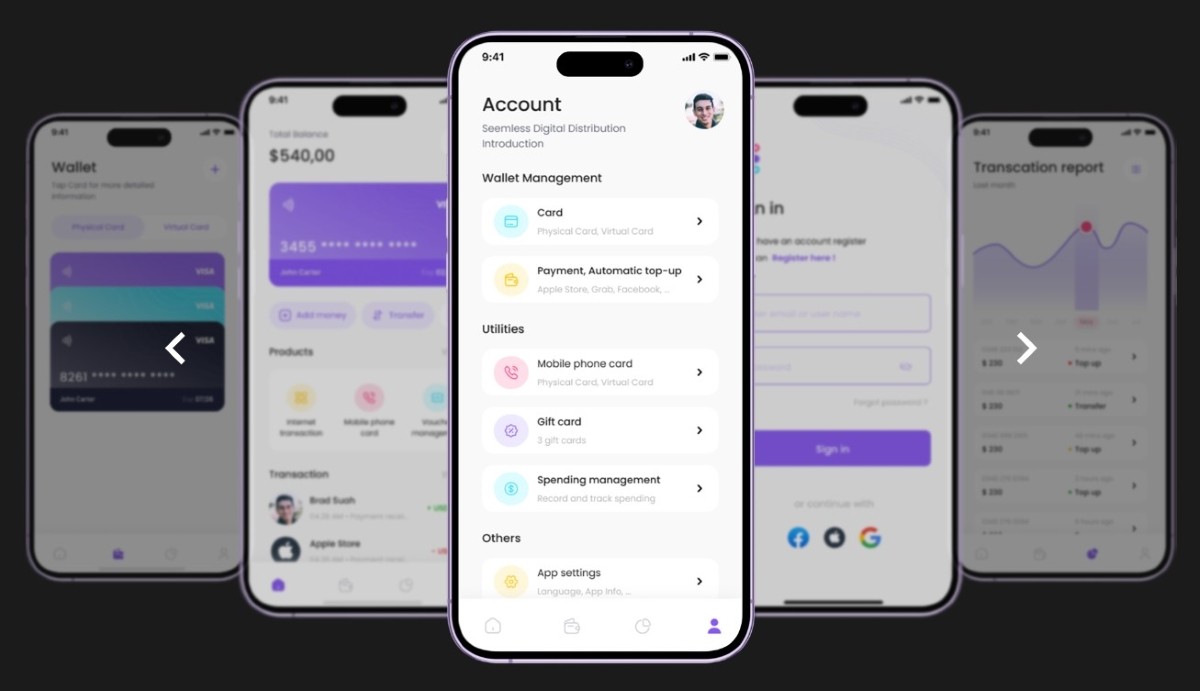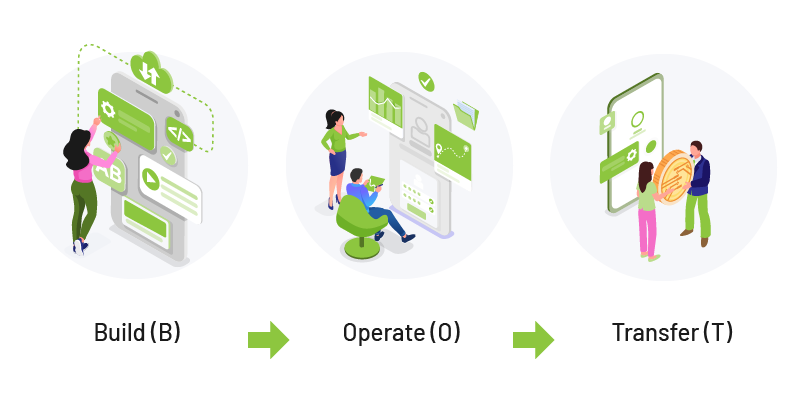In today’s tough business world, outsourcing IT projects is vital. It helps businesses boost efficiency and get top-notch tech help. Outsourcing keeps you flexible and innovative. This article dives into why it is the best option. It covers cost savings, cool tech access, and being scalable. This lets you focus on what matters.
But it’s not all sunshine; you need to know the risks. We’ll talk about when to outsource, how to manage projects well, and key questions to ask. We aim to give you a complete guide to IT project outsourcing.
We want you to make smart choices for your projects. Stick around to learn how to get the most out of your outsourced projects.
Most Commonly Outsourced IT Services
Are you wondering what IT services companies outsource more than the rest? Businesses outsource IT projects to boost efficiency. This includes software development, internet security, and cloud services. IT outsourcing streamlines operations and taps into specialized expertise. Let’s break down what it means for your business.
1. Development and Application of Software Solutions
Outsourcing software development and application projects is becoming a critical strategy for modern businesses. This includes mobile app development outsourcing and efforts to outsource web development. It helps manage costs and focus on core competencies. Outsourcing also taps into a global talent pool. It offers specialized skills and the latest technologies.
Being flexible is key in allowing you to scale your workforce based on project needs. This agility is crucial in a fast-changing business environment. Outsourced IT projects reduce time-to-market for new software solutions. This gives them a competitive edge.
The integration of advanced technologies like AI and RPA is transformative. It lets you automate tasks and improve efficiency. Chatbots powered by AI enhance customer service by providing quick responses.
Outsourcing helps businesses adapt to trends without hefty upfront investments, as well. For instance, it addresses online security concerns. It leverages specialized expertise and technologies.
2. Support for IT Infrastructure and Operations
Outsourcing project work requires efficient management for smooth operations. Partnering with the right team ensures top-tier expertise and technology, reducing downtime. Outsourcing projects help you adapt to new tech trends and stay agile. It cuts costs by avoiding in-house maintenance.
Effective management involves supervising daily tasks and maintaining software. It ensures robust disaster recovery. Outsourcing enhances in-service efficiency and service constancy. Integrating agile systems minimizes delays, streamlining processes for faster deployment.
The project can strengthen security measures, providing specialized expertise. So, outsourcing IT operations boosts efficiency. This allows you to focus on core strategies. can strengthen security measures, providing specialized expertise.
3. Security Services and Security Measures
When you outsource IT projects for security, you get specialized expertise. This boosts security and lets your team focus on core tasks. Managed Security Service Providers (MSSPs) provide real-time monitoring and threat detection. They handle incident response in today’s changing threat landscape.
A big trend is using zero-trust frameworks for security. This means you shouldn’t assume trust, even within the network. It ensures you validate, authorize, and encrypt every access. This is vital to combating advanced cyber threats.
Quantum computing brings new challenges to online security. You need quantum-resistant technologies to protect data. Staying up-to-date on online security is key to outsourced IT projects. Compliance with evolving regulations is crucial. It’s about avoiding penalties, protecting your business, and building trust.
4. Cloud Management and Storage Solutions
Outsourcing projects involves relying on cloud management and storage solutions. Businesses opt for this to streamline operations without managing complex cloud systems themselves.
Managed cloud services handle multi-cloud environments. This ensures cost, performance, and security. Providers offer experience and tools for seamless cloud management. This includes security measures and compliance management.
Outsourcing enables quick adaptation to new requirements. Services are scalable, permitting business growth or cost reduction needs. Outsourcing aims to reduce costs and improve IT efficiency, keeping businesses competitive.
5. Specialized Consulting for IT Strategy and Digital Transformation
Outsourcing IT strategy and digital transformation consulting is key for business growth. With specialized consultants, you get tailored solutions and expert insights. They blend industry know-how with cutting-edge tech to align with your goals.
This joint effort makes your IT strategy agile and responsive. Consultants guide you through tech employment and integrate it well. They prioritize your needs and boost efficiency.
By partnering with digital transformation experts, you can focus on core tasks. They accelerate tech adoption and minimize risks like security issues. Outsourcing IT projects isn’t just about keeping up—it’s about leading. With consultants, expect growth, innovation, and a solid ROI.
Benefits of IT Project Outsourcing
Embracing IT project outsourcing can transform how your business handles tech challenges and growth. Let’s dive into its benefits:
Cost Efficiency Through Reduced Working Expenses
Cost efficiency is a big plus when you outsource. You get global expertise without the costs of full-time staff. Outsourcing helps manage budgets better. It changes fixed IT costs to variable ones, so you only pay for what you use.
This switch can cut overall expenses a lot. It gives you access to global talent for less than hiring in your location, which helps profits.
Being Flexible and Scalable
Being flexible and scalable is vital in modern business. Project outsourcing lets you adjust your IT resources as needed. There is no need for hiring or training; you only scale up or down as required. It offers quick adaptation to business needs.
Access to Specialized Skills and Latest Technologies
Outsourcing IT offers instant access to specialized skills and the latest technology. You don’t need extensive training or long-term commitments. This is crucial in online security, where threats evolve fast. Outsourcing firms stay updated on the latest tech and security methods. This gives you access to peace of mind and innovation.
Focus on Core Business Areas
By outsourcing IT tasks, your team can focus on key areas. These include development, service, and innovation. This boosts efficiency and growth. Outsourcing streamlines operations and boosts industry growth.
Best Time to Outsource IT Projects
Deciding when to outsource IT projects is crucial for business success. These are the key factors to consider:
1. During Periods of Rapid Growth or Significant Transformation
Outsourcing helps when your business is growing fast. It lets you scale up without incurring extra costs. You don’t need to hire and train more people. External experts manage the extra work well. This keeps your main team focused on big goals.
2. When In-House Resources Are Insufficient or Lack Specific Expertise
At times, your team might be busy or missing skills. Outsourcing fills these gaps without hiring more staff. It brings new skills and ideas to your projects. This can lead to more innovation and better results.
3. To Reduce Costs and Improve Efficiency
Outsourcing can save money compared to doing everything in-house. It’s ideal for specialized tasks that you only need at times. This way, you spend money only when necessary. It can cut costs and make your business more flexible.
4. To Innovate Faster by Leveraging External Expertise and Emerging Technologies
Technology changes fast, and it’s hard to keep up. Outsourcing partners know the latest technologies well. Working with them can get you advanced solutions. This keeps you up-to-date in your industry.
Detailed Guide to IT Project Outsourcing
Are you ready to nail IT project outsourcing? Let’s dive in step by step. First, we’ll talk about picking the right model and partner. Then, we’ll cover setting up your venture and keeping management and contact channels on point.
Your journey to high quality outsourced begins here, where planning turns into action.
1. Identifying Core and Non-Core IT Activities
Figuring out what IT tasks are core and non-core helps manage outsourcing well. Core activities are key to winning against competitors. These tasks boost customer happiness and sales. They are vital for keeping your brand strong and delivering on your promise.
You need non-core tasks, but they don’t differentiate you. They include daily admin work, IT support, and some data jobs. Sorting these tasks out requires examining your day-to-day and long-term plans.
Outsourcing the non-core tasks frees up resources. This lets you focus on growth and new ideas. When picking tasks to outsource, consider cost savings and better efficiency. Consider the quality of outside help as well. Outsourcing can work well for complex jobs if they are routine enough for experts to manage.
2. Choosing the Right Outsourcing Model (Onshore, Nearshore, or Offshore)
Picking the best outsourcing model is key. It affects the success of your IT project. Onshore means working with a company in your own country. It’s easy to talk and work as a team, but it costs more.
Nearshore is hiring firms in nearby countries. It saves money and keeps conversations easy. Offshore development is hiring in faraway countries. It costs the least and offers many skilled jobs. But language and time differences can make things hard.
To choose, consider your budget, the project’s complexity, and how much you need to spend. If saving money is crucial, offshore might be best. For more chats and cultural matches, nearshore works well. Onshore is best for lots of cooperation and less red tape.
Learn more: Top 10 Outsourcing Countries in 2026
3. Vendor Selection Process: Criteria and Concerns
Selecting the right vendor is key to a good outsourcing project. First, know what you need from the vendor. This includes support and sticking to standards.
Then, send out a Request for Proposal (RFP). This lists what you need to do and what you expect back. It helps find the right vendors and compare them easily. Look beyond cost. Check their past work, skills, and customer reviews.
Make sure they understand your field and meet your needs. Check if they follow all the necessary rules and have the right certificates. Also, a vendor that matches your style can make working together smoother. Picking carefully increases your chances of success.
4. Setting up Effective Communication and Project Management Structures
Good communication is crucial for successful IT project outsourcing. Start with a solid communication plan. This should outline goals, who to contact, how to talk, and up-to-date schedules. Picking the right tools helps everyone stay connected. These tools should let you share files easily, update work quickly, and talk directly.
Also, be open and give feedback often. Regular updates build trust and keep everyone in the loop. Tailor your communication to suit different team needs. This keeps urgent matters handled fast, and everyone focused on the goals.
5. Implementing and Monitoring the Outsourcing Agreement
Starting and watching over the outsourcing agreement is crucial. Begin with a clear contract. This should cover project details, deadlines, what you expect, and how to measure success. It must also protect your data and follow laws.
Regular checks and audits ensure the partner sticks to the agreement. Set clear goals and track them with Key Performance Indicators (KPIs). Having automatic systems for tracking these helps keep an eye on progress without extra effort.
Do regular audits to check the quality of work and rule-following. Discuss any issues and how to fix them. This keeps the relationship strong and clear, setting the stage for more work together in the future.
Case Studies
Exploring IT project outsourcing can guide your business. Let’s examine Saigon Technology, a leader in software outsourcing. Our firm has supported global companies, improving their operations significantly. We work across industries like logistics, financial services, and software development.
- For example, we worked with Merit Logistics. We transformed the company’s supply chain solutions. Our team enhanced productivity with advanced planning and new software. This not only streamlined operations but also cut costs. This case shows the strong impact of outsourcing IT projects.
- In another case, we collaborated with GTW Prop Trade PTY, an FX trading firm. Our developers replaced an old application with a new, efficient trading platform. This platform was tailored to the client’s needs. This project highlights the benefits of IT outsourcing. Specialized expertise was used to deliver customized, innovative solutions.
- We also worked with Triptomatic on a different project. Our team created a user-friendly platform for organizing non-emergent medical transport. This greatly improved service delivery and the user experience.
These examples show how outsourcing can transform businesses. By partnering strategically and applying technical skills, great results are achieved. Understanding these cases helps you see how outsourcing offers technical and strategic business benefits.
Best Practices for IT Project Outsourcing
Dive into key rules for outsourcing IT projects. By following these guidelines, you ensure your projects not only meet but surpass your expectations. Learn to create strong partnerships, streamline your operations, and get the most value. All this while keeping projects on target and aligned with your big goals.
Are you ready to improve your outsourcing skills? Keep reading for expert advice that will change how you manage projects.
-
Establishing Clear Communication Channels and Regular Feedback Loops
It’s vital to have clear ways to talk and regular times to check in when outsourcing projects. This stops misunderstandings and keeps everyone aligned. Start by setting clear goals and project details. This stops confusion right from the start. Use tools like Slack or Microsoft Teams for quick messages.
Have regular video calls on Zoom to keep things personal and build stronger ties. Use agile methods like daily stand-ups and sprint reviews to keep talking and adjusting as you go. This keeps your project in line with your goals and builds trust.
Also, set up regular times to update each other. Use tools like Jira to keep track of these meetings. This helps make quick changes and keeps improving your project.
-
Ensuring Robust Security Measures and Compliance With Data Protection Standards
When you outsource IT projects, it’s critical to have strong security and follow data protection laws. Start with strong encryption methods, like AES. Keep updating to stay safe from new threats.
Set up a good access management system. It should limit access based on user roles and only give needed permissions. Regular security checks are a must. They check if your protections are working and if you meet standards.
Follow guidelines like PCI DSS for payment security or NIST for broader protections. This keeps your operations and customer data safe. Also, secure your APIs. Check inputs carefully, use safe data-sending methods, and use strong login checks. This prevents unauthorized access and data leaks.
-
Maintaining Quality Control Through Regular Audits and Performance Metrics
Maintaining high quality in IT project outsourcing is crucial for exceeding expectations. Regular audits check if you meet set standards and goals. They catch any issues early, stopping big problems later. Use different audits, like quality, compliance, and process audits, for detailed checks on various project parts.
Also, use performance metrics to measure success. Look at delivery times, bug rates, and cost savings. These give clear data to evaluate your strategy. Setting these metrics means deciding what’s important for your project’s success and aligning with your goals.
Tools that integrate these metrics help you see your team’s performance and project health in real-time. Plan and talk with your partner to make sure everyone understands these expectations and standards.
It’s about continuous improvement and staying aligned with your goals. Regular updates based on metrics and audits help keep your project on track and ensure quality results.
-
Fostering a Collaborative Relationship With Outsourcing Partners
Building a team-like relationship with your partners is key to successful outsourcing. Treat them as essential members of your team. This builds respect and trust, which is essential for long-term success. Set clear, agreed-upon ways to communicate.
Regular, open talks through video calls make interactions personal and improve understanding. Also, define roles and share decision-making. This gives your partner a real stake in the project’s success and aligns their goals with yours. Be flexible and adapt to changes.
This keeps your relationship flexible and ready to face new challenges. A collaborative relationship doesn’t just boost project results; it also sparks innovation and makes your engagement with your partner more dynamic.
Final Thoughts
As we finish discussing IT project outsourcing, it’s clear it’s more than just delegating tasks. It’s about sparking innovation and boosting efficiency. Businesses outsource to focus on what they do best while accessing global talent. This brings in fresh ideas and helps you grow quickly.
But the real power is in treating it like a partnership. Your provider is an extension of your team, sharing goals and insights. Trust and respect build success together.
In today’s IT landscape, outsourcing isn’t just about tasks; it’s about strategic growth. Choose your partner wisely for lasting success. Cheers to smart choices and strong partnerships in IT.
FAQs
-
How do you manage and outsource a project effectively?
To manage projects effectively, start with detailed planning and open communication. Define clear project scopes and deliverables.
Use regular updates and project management tools like Asana or Jira to keep everyone aligned. Tools like Worksection and Freedcamp are great for real-time updates and task management, helping keep projects on track.
-
What are the risks of outsourcing IT projects?
Key risks include miscommunication, inconsistent quality, and delays. To mitigate these risks, pick a partner with proven expertise and a strong reputation. Conduct regular quality checks and maintain clear communication channels.
Use detailed contracts that set standards for deliverables. Establish a robust issue resolution process to address problems quickly and prevent escalation.
-
What is project-based outsourcing?
It involves hiring an external team to complete a specific project within a set timeframe and budget. This model suits projects with clear objectives and deliverables.
It allows organizations to access specialized skills and complete projects efficiently without hiring new staff long-term.
-
What are the four types of outsourcing models?
There are four main types of outsourcing models. Offshore outsourcing uses a service provider in a different country, often for lower labor costs. Nearshore outsourcing involves partners in neighboring or nearby countries, easing some offshore challenges.
Onshore outsourcing uses providers within the same country, helping maintain control and cultural alignment. Hybrid outsourcing combines onshore and offshore or nearshore elements for a balance of cost, control, and convenience.
-
Why is IT project outsourcing to Vietnam beneficial?
Vietnam is popular for project outsourcing due to its cost efficiency, growing tech talent, and government support for the ICT sector.
The country offers competitive pricing and a strong work ethic. Its increasing English proficiency makes it an attractive option for IT outsourcing.











